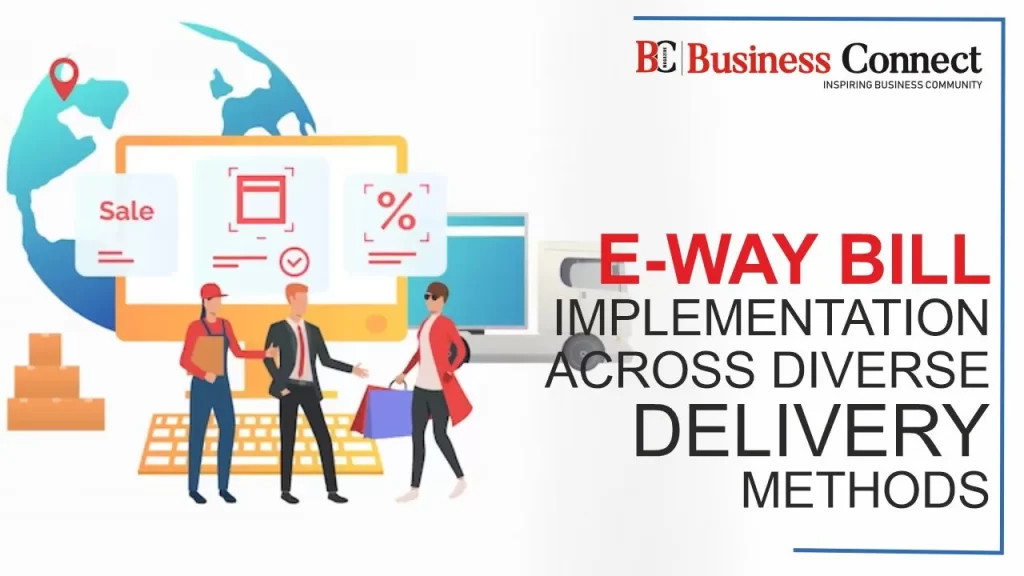e-Way Bill Implementation Across Diverse Delivery Methods
The Indian logistics sector has undergone several changes, particularly in transportation. Since the introduction of the e-way bill, all merchants in the nation who transfer items valued at more than Rs. 50,000 are required to provide an e-way bill whenever they move goods over state lines.
For states that have embraced the e-way bill system for intrastate goods movement, the rule governs the intrastate movement of commodities. The same consignment may be delivered via multiple modes of transportation, so the compliances differ. This article will examine the use of e-way bills across several delivery channels.
What are the different methods of delivery?
A dealer will have numerous options on how to move from one location to another, move the products either by driving their car, renting out a car for this process, or it may go about linking itself up with some goods transport agency GTA that can do such movements.
The dealer and the buyer can decide whether to use the dealer’s car for shipping, hire a separate vehicle for transporting goods or get a GTA. If applicable, e-way bills must be generated using suitable billing software.
e-Way Bill Generation, Updation and Cancellation Rules
Generating the e-way bill
There is a requirement to generate the Eway bill (EWB-01) above under any of these three circumstances. The person responsible for generating an e-way bill is either a consignor, a consignee or a recipient of goods (if different than that from where he may be collecting them) or when it uses GTA services. The responsibility of generating e-way bills under various methods of transport are as follows: –
- Using an owned vehicle – The consigner, receiver or consignee of goods
- Using a hired vehicle – The consignor, the consignee or receiver of goods (if different from what has been mentioned above)
- Using services of a GTA – The consignor or the Transporter in case the consignor does not generate an e-way bill.
e-Way bill can be generated using an appropriate e-way bill software.
Updating the Eway bill
There are situations in which the Eway bill that was previously generated needs to be updated, corrected, or changed due to changes in the vehicle during shipping or transhipment, for a change in the vehicle number. These situations usually occur when a transporter’s services are used to send the shipment. The transporter must update the vehicle number of any new vehicle or change the mode of transportation (if it’s by road, rail, or air) in case of a vehicle change or for any other reason.
Cancellation of e-Way Bill
When goods are not moved, or the movement of products is other than described in the e-way bill, the generated e-way bill can be cancelled. However, the cancellation must happen within 24 hours after it is created.
Requirements for different methods of delivery
Different delivery methods have different e-way bill implications and procedures. The e-way bill criteria for the three aforementioned methods will alter correspondingly. The following describes the prerequisites for each of the three scenarios:
Transporting Goods using Own Vehicle:
The dealer will need to generate an e-way bill by providing their details and the details of the goods and transportation. The dealer must complete Part A of the form while only stating the vehicle number in Part B. There won’t be a need to list all particulars concerning the transporter or his GST number.
Transporting Goods using Hired Vehicle:
The dealer is required to generate the e-way bill. In addition to other pertinent information, the dealer should supply the rental car’s vehicle number. Only Part A of the form must be filled out in full, and Part B should only include the vehicle number. It is optional to fill out the transporter’s details.
Transporting Goods using GTA Services:
In this scenario, the e-way bill may be created by the carrier of goods (GTA) or simply, for the sake of convenience, the consignor/consignee. Part A of this form is filled out by either the consignor or consignee if they produce the e-way bill, and GTA provides vehicle and transporter details in part B.
If the GTA produces an e-way Bill, it receives all the information in part A above that directs how to generate the chosen suitably done waybill document based on users. In addition to these forms of distribution, a dealer may choose to convey products by train, river, or aircraft. Depending on each, the criteria could change.
The one important thing that should be kept in mind, however, is the person who drives the vehicle on which these products are being transported must have an e-way bill with them throughout their journey to any place, whether by road, water or air. There could be cases where an e-way bill is not required from the beginning, such as when the value of goods transported does not exceed ₹50 lakhs.



